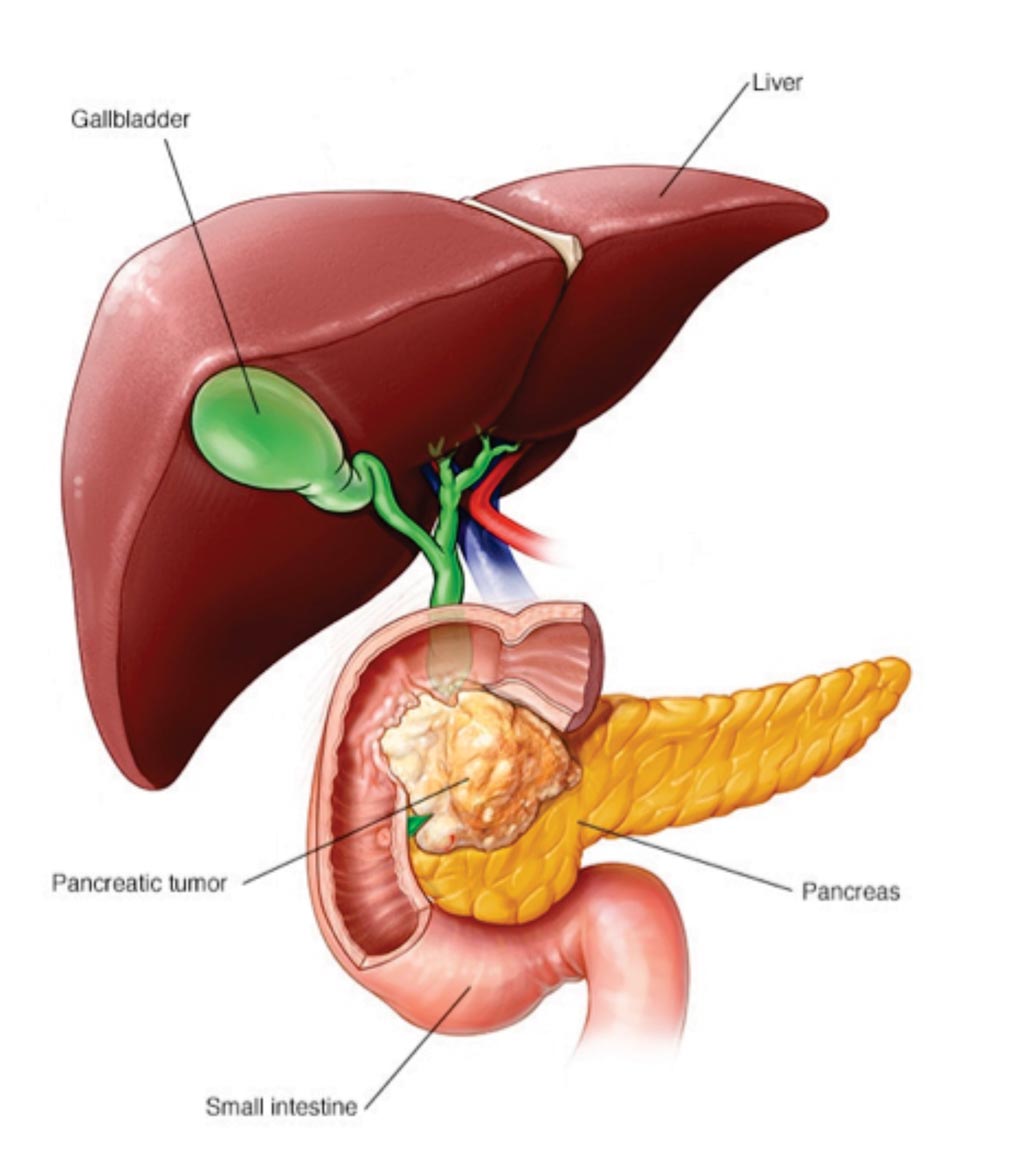Method Identifies Cancer in Early Onset Diabetics
By LabMedica International staff writers
Posted on 04 Jul 2018
It is unclear how long pancreatic ductal adenocarcinomas (PDACs) are present before diagnosis. Patients with PDAC usually develop hyperglycemia and diabetes before the tumor is identified.Posted on 04 Jul 2018
It has been suggested that if early invasive PDACs are associated with hyperglycemia, the duration of hyperglycemia should associate with the time that they have had the tumor. Of subjects with new-onset diabetes, based on glycemia, over the age of 50 years, approximately 1% are diagnosed with pancreatic cancer within three years.

Image: Patients diagnosed with pancreatic cancer can develop elevated blood sugar levels up to three years before their cancer diagnosis (Photo courtesy of Mayo Clinic).
Scientists at the Mayo Clinic (Rochester, MN, USA) and their colleagues carried out a study recently exploring methods to diagnose cancer in patients with early onset diabetes. In the first study, they plotted blood sugars levels of patients with pancreatic cancer going back five years prior to diagnosis. They also plotted the blood sugars of a control group of patients who were age and gender matched to the patients with pancreatic cancer. They analyzed temporal fasting blood glucose (FBG) profiles collected for 60 months before patients received a PDAC diagnosis (index date) (cohort A = 219)), FBG profiles of patients with resected PDAC (n=526) stratified by tumor volume and grade (cohort B =526), and temporal FBG profiles of patients with resected PDACs from whom long-term FBG data were available for 103. In another group of patients and controls, they plotted blood sugars of nearly 600 patients with pancreatic cancer just prior to surgical removal of the cancer.
In cohort A, the mean FBG did not differ significantly between cases and controls 36 months before the index date. Hyperglycemia was first noted 30–36 months before PDAC diagnosis in all cases, those with or without diabetes at baseline and those with or without resection at diagnosis. FBG level increased until diagnosis of PDAC. In cohort B, the mean FBG did not differ significantly in controls versus cases with PDACs below 1.0 cc. The smallest tumor volume associated with hyperglycemia was 1.1–2.0 cc; FBG level increased with tumor volume. FBG varied with tumor grade: well- or moderately differentiated tumors (5.8 cc) produced the same FBG levels as smaller, poorly differentiated tumors (1.5 cc). In cohort C, the duration of pre-diagnostic hyperglycemia for cases with large-, medium-, or small-volume PDACs was 24–36, 12–24, and 0–12 months, respectively. PDAC resection resolved hyperglycemia, regardless of tumor location.
Suresh Chari, MD, a gastroenterologist and senior author of the study, said, “Pancreatic cancer is rapidly fatal after its diagnosis, with average survival of six months. It has also been thought that its course prior to diagnosis is also rapid and that early detection is not feasible. But our studies provide hope that pancreatic cancer can indeed be diagnosed at an earlier stage when it is resectable.”
The authors concluded that in a case–control study of patients with PDAC from two databases, they associated FBG level with time to PDAC diagnosis and tumor volume and grade. Patients are hyperglycemic for a mean period of 30–36 months before PDAC diagnosis; this information might be incorporated in strategies for early detection. The study was originally published online on April 30, 2018, in the journal Gastroenterology.
Related Links:
Mayo Clinic














